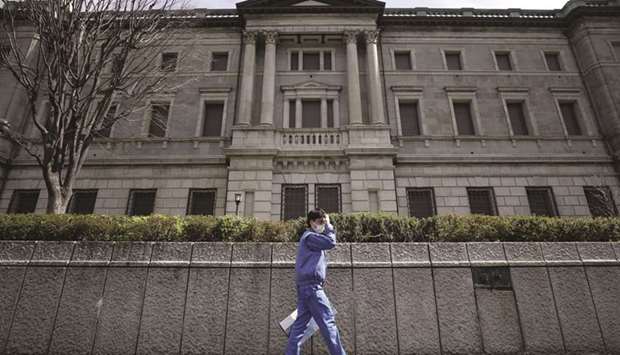A new Bank of Japan lending programme for stock-fund investors is attracting scant demand, raising questions about the BoJ’s latest attempt to ease the side effects of its massive stimulus policy.
Through the programme, the central bank lends exchange-traded funds it holds to market players to ease a lack of supply it has helped cause through its large-scale buying.
The BoJ has so far lent out about ¥10.3bn ($100mn) of ETFs since launching the programme on June 12, with almost all of the lending taking place on a single day, according to the bank.
That represents just 0.03% of the ¥32.8tn of the funds held by the BoJ, which dominates the market with ownership of more than three-quarters of ETFs.
The paltry initial interest in the loaned ETFs suggests the BoJ may not have sufficiently addressed market needs or that investors need more to time to get used to it. The sustainability of the central bank’s huge stimulus depends in part on the BoJ’s ability to show it can effectively limit the distortions its policy creates.
“It’s not off to a great start for sure,” said Yoshimasa Maruyama, chief market economist at SMBC Nikko Securities Inc. “That probably doesn’t bother the BoJ. The point is they want to show they are doing something to alleviate the negative effects of ETF purchases that will probably go on for a long while to come.”
Except for the spike of interest on June 25, four working days before the end of the quarter, use of the program has been minimal to non-existent.
“As valuations are around their peak, it could be that not many investors are buying at the moment, and so market makers don’t have much opportunity to sell ETFs,” said Koei Imai, head of the ETF center at Nikko Asset Management. The jump in borrowing on June 25 was likely to facilitate selling of Nikkei 225 ETFs at the quarter-end, he added.
So far, BoJ officials aren’t disappointed by the results of the ETF lending programme, according to people familiar with the matter. They are taking a longer-term view and believe it will enjoy greater use as investors get accustomed to it, the people said.
Governor Haruhiko Kuroda ramped up the ceiling on annual purchases of the funds to ¥12tn - double the existing yearly target – at the height of investor jitters over the coronavirus pandemic in March.
While the BoJ’s buying spiked at an annualised pace of around ¥18tn that month as the bank took an even greater share of the market, purchases in June were just under an annualised pace of ¥7tn as markets showed more stability, Bloomberg calculations show.
Still, the BoJ is aware of the ongoing need to mitigate the impression it is crowding out market players.
The BoJ minutes from a meeting with ETF market participants in November showed opinions generally were in favour of the programme.
But now that the programme is up and running, not everybody agrees.
“The BoJ made a huge miss in its reading of potential demand,” said Norihiro Fujito, chief investment strategist at Mitsubishi UFJ Morgan Stanley Securities Co in Tokyo. “The BoJ probably thought this could serve as cover for them for keeping all these ETF holdings, which have snowballed in size.”

A pedestrian wearing a protective mask walks past the Bank of Japan headquarters in Tokyo. A new BoJ lending programme for stock-fund investors is attracting scant demand, raising questions about the central bank’s latest attempt to ease the side effects of its massive stimulus policy.


